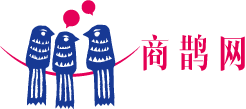国务院联防联控机制发布第九版新冠肺炎防控方案 涉隔离期限和方式等多项调整
The joint prevention and control mechanism of the State Council released the ninth edition of the novel coronavirus pneumonia Prevention and Control Plan, involving a number of adjustments such as isolation periods and methods
为进一步指导各地做好新型冠状病毒肺炎防控工作,在认真总结《新型冠状病毒肺炎防控方案(第八版)》印发后的防控工作实践,特别是针对奥密克戎变异株传播速度快、隐匿性强等特点的基础上,国务院应对新型冠状病毒肺炎疫情联防联控机制综合组组织修订形成了《新型冠状病毒肺炎防控方案(第九版)》,全面落实“外防输入、内防反弹”总策略和“动态清零”总方针,切实维护人民群众生命安全和身体健康,最大限度统筹疫情防控和经济社会发展。与第八版相比主要修订内容包括:
To further guide the prevention and control work of COVID-19 in all localities, based on the careful summary of the prevention and control practice after the issuance of COVID-19 Prevention and Control Protocol (Eighth Edition), especially for the characteristics of the Omicron variant, such as fast transmission speed and strong concealment, Defense under the State Council to COVID - 19 outbreak spreading mechanism maintaining organization revised formed the COVID - 19 control scheme (ninth edition) ", the full implementation of "outside the input, the rebound" total strategy and "dynamic reset" general policy, to safeguard people's life safety and body health, as a whole the epidemic prevention and control and maximum economic and social development. Compared with the eighth edition, the main revisions include:
一、优化调整风险人员的隔离管理期限和方式
First, optimize and adjust the isolation management period and methods of risk personnel
将密切接触者、入境人员隔离管控时间从“14天集中隔离医学观察+7天居家健康监测”调整为“7天集中隔离医学观察+3天居家健康监测”,核酸检测措施从“集中隔离医学观察第1、4、7、14天核酸检测,采集鼻咽拭子,解除隔离前双采双检”调整为“集中隔离医学观察第1、2、3、5、7天和居家健康监测第3天核酸检测,采集口咽拭子”,解除集中隔离医学观察前不要求双采双检。密接的密接管控措施从“7天集中隔离医学观察”调整为“7天居家隔离医学观察”,第1、4、7天核酸检测。
Adjust the isolation and control time of close contacts and entry personnel from "14-day centralized isolation medical observation and 7-day home health monitoring" to "7-day centralized isolation medical observation and 3-day home health monitoring". Nucleic acid testing measures were changed from "centralized medical observation and isolation" on the 1st, 4th, 7th, and 14th days. Nasopharyngeal swabs were collected. "Double sampling and double testing before the release of isolation" was changed to "nucleic acid testing and oropharyngeal swab collection on the 1st, 2nd, 3rd, 5th, 7th day of centralized isolation and medical observation and the 3rd day of home health monitoring", and double sampling and double testing were not required before the release of centralized isolation and medical observation. The bonding control measures were changed from "7-day centralized isolation and medical observation" to "7-day home isolation and medical observation", and nucleic acid testing was performed on the first, fourth, and seventh days.
二、统一封管控区和中高风险区划定标准
Second, unified closure and control areas and medium and high risk areas delineation standards
将两类风险区域划定标准和防控措施进行衔接对应,统一使用中高风险区的概念,形成新的风险区域划定及管控方案。高风险区实行“足不出户、上门服务”,连续7天无新增感染者降为中风险区,中风险区连续3天无新增感染者降为低风险区。其他地区对近7天内有高风险区旅居史人员,采取7天集中隔离医学观察措施。中风险区实行“足不出区、错峰取物”,连续7天无新增感染者降为低风险区。其他地区对近7天内有中风险区旅居史人员,采取7天居家医学观察措施。低风险区指中、高风险区所在县(市、区、旗)的其他地区,实行“个人防护、避免聚集”。其他地区对近7天内有低风险区旅居史人员,要求3天内完成2次核酸检测。
The two types of risk area delineation standards and prevention and control measures are connected and corresponded, Unified use of the concept of medium-high risk area, form a new risk area demarcation and control scheme. High-risk areas implement "staying at home and providing onsite service", and without new infections for 7 consecutive days were downgraded to medium-risk areas, and medium-risk areas without new infections for 3 consecutive days were downgraded to low-risk areas. In other regions, people with a history of travel in high-risk areas within the past seven days should be quarantined for medical observation for seven days. The medium-risk area has been upgraded to a low-risk area with no new infections for 7 consecutive days. In other regions, 7-day home medical observation measures were taken for those with a history of travel in medium-risk areas within the past 7 days. The low risk area refers to the other areas in the county (city, district, flag) where the medium and high risk area is located, and "personal protection and avoidance of gathering" is implemented. In other regions, people with a history of travel in low-risk areas within the past 7 days are required to complete two nucleic acid tests within 3 days.
三、完善疫情监测要求
Third, improve the epidemic monitoring requirements
加密风险职业人群核酸检测频次,将与入境人员、物品、环境直接接触的人员核酸检测调整为每天1次,对人员密集、接触人员频繁、流动性强的从业人员核酸检测调整为每周2次。增加抗原检测作为疫情监测的补充手段,基层医疗卫生机构对可疑患者、疫情处置时对中高风险区人员等可增加抗原检测。
The frequency of nucleic acid testing for professionals at risk of encryption will be adjusted to once a day for those who have direct contact with inbound personnel, articles and the environment, and twice a week for those who have dense personnel, frequent contact and high mobility. Additional antigen testing can be used as a supplementary means for epidemic surveillance. Primary medical and health institutions can add antigen testing to suspicious patients and people in medium-high risk areas when dealing with the epidemic.
四、优化区域核酸检测策略
Fourth, optimize the regional nucleic acid detection strategy
明确不同人口规模区域核酸检测方案,针对省会城市和千万级人口以上城市、一般城市、农村地区,综合疫情发生后感染来源是否明确、是否存在社区传播风险及传播链是否清晰等因素进行研判,根据风险大小,按照分级分类的原则,确定区域核酸检测的范围和频次。
Clarify the nucleic acid detection scheme in different population sizes. In view of provincial capitals, cities with a population of over 10 million, general cities and rural areas, the factors such as whether the source of infection is clear, whether there is community transmission risk and whether the transmission chain is clear after the outbreak are judged, and the scope and frequency of regional nucleic acid detection are determined according to the risk and the principle of classification.
(总台记者 史迎春)
(Reporter of CCTV Shi Yingchun)



